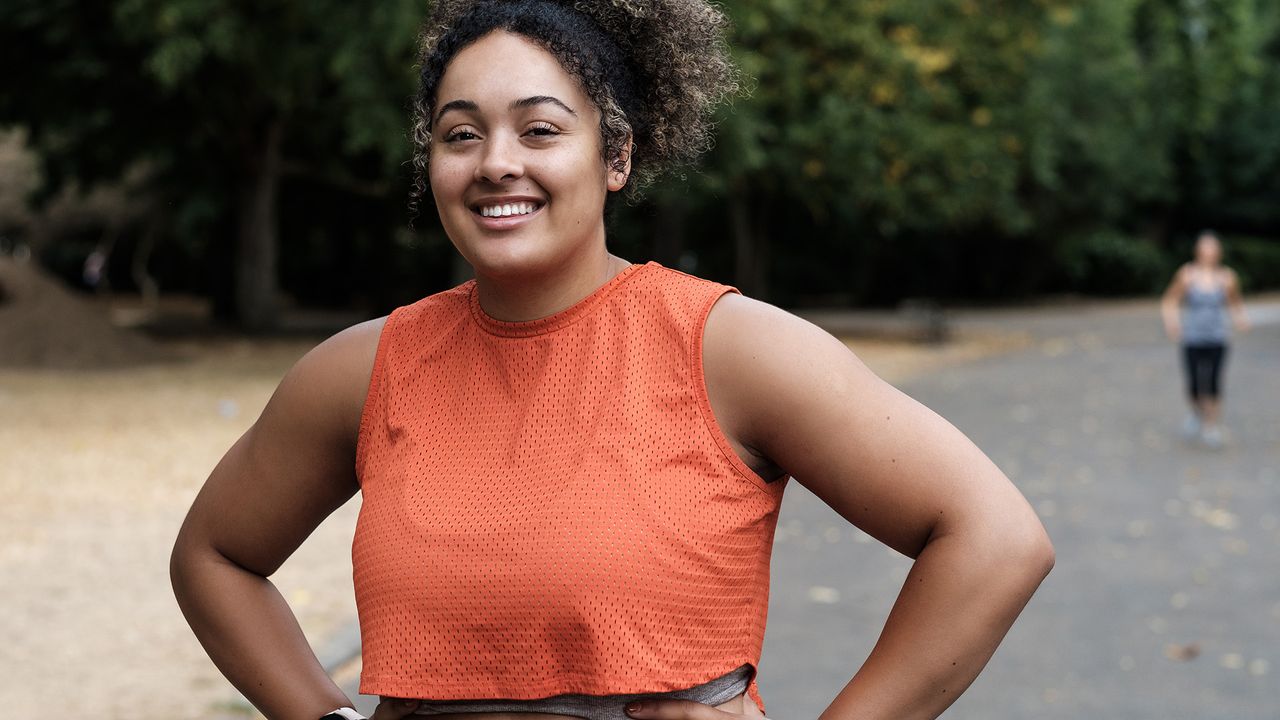

The start of a new year brings a chance to reset, refocus, and take charge of your fitness journey. Whatever your goal might be – from shedding a few pounds and building strength to simply feeling healthier and more energised – this is the perfect time to make lasting changes that truly stick.
But achieving your best self doesn’t require diving into extreme fads or exhausting yourself with unrelenting workout routines. Instead, the key lies in adopting sustainable habits that fit seamlessly into your lifestyle and keep you motivated over the long term.
With a mix of functional fitness, effective meal plans, and proven strategies to keep cravings and plateaus at bay, there’s something here for everyone – whether you’re a beginner taking the first steps or a seasoned pro looking to level up.
This isn’t about quick fixes or overnight transformations. It’s about building a stronger, healthier, and happier you—one step, rep, and bite at a time. So, lace up your trainers, grab your water bottle, and let’s make 2025 the year you crush your goals and enjoy the process along the way.
Fitness tips to get you in shape in 2025
"I'm going to exercise more" is the most common New Year's resolution in the world (definitely in the US/UK). As people finish their month (year?) of overindulging, the pressure to do something about the ever-increasing waistline is mounting. The good news is that you can do a lot to combat weight gain.
Exercise is an excellent place to start, but instead of forcing yourself to do a 10,000 kettlebell swings challenge or 100 pull-ups a day for a week, you should try something more achievable to improve your health, like rucking or ice baths. Below are T3's finest workout and motivation tips to get you started!
1. Be patient
Despite what many actors and fitness influencers on Instagram would like you to believe, changes to your physique and health don't happen overnight. No one can build 10 kilos of lean muscle in three months, nor can you lose lots of weight quickly and keep it off.
Sign up to the T3 newsletter for smarter living straight to your inbox
Get all the latest news, reviews, deals and buying guides on gorgeous tech, home and active products from the T3 experts
Gradual changes and sustainable lifestyle choices can affect your well-being positively in the long run, unlike dangerous calorie-restricted diets that hurt your metabolism and weaken you. Don't do it for social media; do it for yourself.
2. Challenge yourself
An excellent way to kickstart a new, healthier year is by setting up a challenge for yourself. This doesn't have to be complicated: you can pick a fitness wearable from our best fitness tracker or best running watch guide and do a 30-day step challenge. Every day, you must hit 10,000 steps, no matter what.
This is a great way to keep you going, even when you can't be bothered to do anything. Even if you miss a day, that's fine: do as many days as possible within the month. Every step you take will bring you closer to a healthier you. Not to mention, brisk walking is a great way to boost metabolism.
3. Get mobile
Modern life makes us sedentary. And we all know that sitting for too long is not healthy. The issue is not the act of sitting but the lack of movement. Standing up from time to time is essential. You can tackle this issue by being more N.E.A.T. NEAT is short for 'Non-Exercise Activity Thermogenesis', and although this sounds very complex, it really isn't. NEAT is your body exercising when you aren't exercising.
How can you include more NEATness in your life? Stand up from your desk and get some water more often. Take the stairs instead of using the elevator. Being more NEAT can help you burn calories without sweating through HIIT workouts or gruelling indoor bike sessions. We aren't suggesting you stop exercising altogether but being more NEAT every day can help you achieve your weight loss goals quicker. Find out more about being NEAT here: How to get fit when you're lazy.
4. Prioritise low-impact exercises
Low-impact exercises, such as Pilates, yoga, swimming, and walking, are invaluable for maintaining fitness and joint health, especially as you age. Unlike high-impact activities, these exercises place minimal stress on joints, reducing the risk of wear and tear.
Research highlights their benefits, including improved joint function and pain relief in those with arthritis, as well as enhanced balance and core strength through practices like Pilates. Swimming and walking have been shown to improve cardiovascular health while protecting the joints from strain.
Beyond physical benefits, low-impact workouts also promote mental well-being. Yoga, for instance, is linked to reduced anxiety and depression and fosters mindfulness. These exercises support long-term mobility, prevent injuries, and maintain overall fitness without overburdening the body.
Incorporating low-impact activities into your routine ensures a balanced approach to physical and mental health, making them essential for sustained well-being at any age.
5. Set SMARTer goals
You need to turn your new fitness effort into a habit, which is the hardest part. Until it becomes second nature to take the stairs or head out for a walk when you have some free time, you need to consciously make an effort to do these things. Setting a realistic goal can help you turn your efforts into habits.
Don't set ridiculously unattainable goals (e.g. "I would like to look like Chris Hemsworth by the end of January"), but don't be too modest or vague either (e.g. "I'd like to lose some weight"). Setting a S.M.A.R.T. goal is the best way to go about this. S.M.A.R.T. stands for Specific, Measurable, Achievable, Relevant and Time-bound. Some examples of S.M.A.R.T. goals are:
- I need to go to the gym at least three times a week for the next three months.
- I must practise mindfulness (i.e. body check-in) twice a day (after I woke up and before I go to bed) in January.
- I must meal prep for myself every Sunday afternoon for the next three days until the end of February.
Once you reach the end of the time period set, you can (and should) check how it went, and set new goals. Hopefully, by then your new habits will be formed, making it easier to stay happy and healthy.
6. Partner up
Keeping to a new fitness routine is easier when you do it with other people. Group exercise provides social pressure and accountability, which can help motivate you not to give up prematurely. And it's not just us saying this; research suggests that a "person who makes a healthy behaviour change has a larger impact on others’ positive health behaviours than one whose behaviour is consistently healthy." So, buddy up and get fit faster!
7. Try resistance training
Running is the most accessible sport to get into: all you have to do is put on your best running shoes and start moving your legs. Until recently, cardio exercises such as running or cycling have been touted as the best way to lose belly fat. However, without resistance training, long-term weight loss is not possible. Intense cardio training and a healthy diet will help you lose weight, but as soon as you start running/cycling, the weight will go back up.
By building muscle, you increase your body's resting metabolic rate or basal metabolic rate (BMR), meaning you will burn more calories in the resting state. This is because muscles require more energy for maintenance. That said, cardio has its place, and as the name suggests, some cardio is excellent for heart health and can help kick-start metabolism.
8. Go hybrid
Whereas before the pandemic, people looked at home exercising as a distant second option when all the nearby gyms were closed, thanks to the expansion of digital platforms such as Apple Fitness+ and Peloton, home workouts look more appealing than ever before.
Gyms still have their place in the broader fitness ecosystem, as even the best iFit classes won't recreate the sensation of working out with like-minded people. Not to mention, using the correct technique is paramount when building muscle, so periodically checking in with your PT, who can evaluate your progress, is still a good idea.
We recommend finding your own space and time for home workouts (if you can); you can do yoga while your significant other is watching the telly next to you, but having a dedicated area and time where you can focus on yourself helps you get in the right mindset.
9. Add HIIT for quick fitness gains
High-Intensity Interval Training (HIIT) offers an efficient way to burn calories, boost metabolism, and improve cardiovascular health. HIIT alternates short bursts of intense exercise with brief recovery periods, making it more effective for fat loss than steady-state cardio. Research supports its benefits: in the Journal of Obesity, researchers found HIIT significantly reduced subcutaneous and abdominal fat while improving insulin sensitivity. Incorporating HIIT can maximise results in a shorter time, ideal for busy lifestyles.
10. Bundle temptation
Temptation bundling sounds obvious once you think about it, but scientists have only recently started paying more attention to the topic. Research suggests it's extremely useful in boosting workout motivation.
The concept is simple: you need to pair an activity you like (such as listening to audiobooks) with something you really can't stand (e.g. exercising). By only allowing yourself to enjoy a pleasurable activity when you're working out, your brain will attach positive associations with both, essentially tricking yourself into liking exercise.
The research showed that "giving participants audiobooks and encouraging temptation bundling boosted their likelihood of a weekly workout by 10–14% and average weekly workouts by 10–12% during and up to seventeen weeks post-intervention." It's worth a try!
11. Measure fitness differently
In-depth: 7 exercises to test and improve your fitness
Most people measure fitness in arm circumference and body fat percentage, which is very wrong. Muscular, lean people can be the unhealthiest people, despite looking 'fit'. Not to mention, maintaining an 'Instagram physique' often requires the consumption of banned substances and PEDs (performance-enhancing drugs).
Instead, measure fitness by strength, flexibility and mobility. Instead of curling dumbbells all day long, work on hamstring flexibility. Forget triceps kickbacks; improve shoulder mobility instead. Don't worry about how big your quads look – work on how long you can hold the dead hang pose.
12. Optimise habits for better fitness performance
During our interview with Polar CEO Sander Werring, he said, “In the past, sports were an enabler for good health. Nowadays, health is an enabler to perform better at sports."
It's never been easier to optimise health, thanks to smartwatches and smart rings like the Oura Ring 4. These handy devices can help improve sleep, lower stress levels, and aid recovery for better performance on the track or bicycle.
All you have to do is wear them as much as possible and listen to their workout and recovery suggestions. Don't fall into the trap of not paying attention to your body. Although wearables are getting smarter by the day, they can only 'see' through their sensors; they can't tell if you're not feeling 100% and up for a big exercise day.
Dieting tips to get you in shape in 2025
The second most popular New Year's resolution (after 'exercise more') is losing weight and/or losing belly fat. And just like with exercise, most people will go completely over-the-top with dieting in the new year and replace their deep-fried potato-based diet with lettuce and lemon water from one day to another. We recommend applying small changes and gradually scaling up the efforts to ensure the lifestyle shift won't shock your body. We all react to specific diets differently, so paying attention to our bodies is paramount for long-term results.
1. Set realistic goals
Setting goals can help you stay on track with your new fitness goals, and the same applies to dieting, too. It's possible to lose weight quickly, but often, that's only the result of your body losing water, not fat. Reducing body fat levels requires a lot of patience, planning, and resilience. Set a goal that doesn't include your dream body fat percentage; instead, make an effort to reduce alcohol consumption, snacking, and processed food.
2. Forget calorie-counting
In-depth: What are macronutrients?
A calorie is not always a calorie. A calorie from a chocolate bar will fuel you differently than a calorie from brown rice, for example. From a health perspective, it's more beneficial to keep track of macros. 'Macro' is short for macronutrients, of which there are three: carbohydrates, protein and fat. Tracking macro intake is better for long-term weight loss. There is a myriad of free apps to read the barcodes of products that can add macros up for you.
3. Let tech help you
Some devices, such as Lumen, can track metabolism and recommend a diet based on macronutrients and fitness goals, while others monitor sugar (glucose) levels in your blood. Continuous glucose monitoring (CGM) platforms such as SuperSapiens and Levels can help better understand how food affects blood sugar levels so that you can avoid energy slumps in the afternoons. Smart bathroom scales are also a valuable ally, whether you're trying the keto diet or a new exercise regime or are already in good shape and want to monitor or care about that fact.
4. Adopt a plant-based diet with fish
Adopting a plant-based diet supplemented with fish is a scientifically supported approach to enhancing longevity and overall health. This dietary pattern emphasises whole grains, fruits, vegetables, legumes, nuts, and seeds, combined with fish as a lean protein source rich in omega-3 fatty acids.
Studies, such as those conducted by the Harvard T.H. Chan School of Public Health, show that plant-forward diets, like Mediterranean or pescatarian diets, are linked to lower risks of cardiovascular diseases, improved brain function, and reduced inflammation. Omega-3s found in fatty fish like salmon and mackerel contribute to heart health and may reduce the risk of age-related cognitive decline.
Additionally, a review in The Lancet Planetary Health highlighted how combining plant-based eating with sustainable seafood supports both individual health and environmental sustainability. This dietary approach not only provides essential nutrients but also promotes weight management by focusing on nutrient-dense, satiating foods that are naturally lower in calories.
5. Drink more water
In-depth: I stopped drinking 2 litres of water a day for a week to see what would happen
Another obvious thing to do if you want to kickstart your metabolism is to drink more... water. Not fizzy drinks, not coffee/tea, water. Having enough water in your system will help your cells regenerate quicker, emptying toxins out of your system more efficiently, and just in general, for you to be more healthy. You don't have to guzzle five litres of water every day, but having a big glass of water with your main meals can help you feel fuller and pass stool easier.
4. Drink less alcohol
In-depth: Cut alcohol for better weight loss results
If you want to lose weight – or at least not put on too much extra weight – there is one thing you can do that is almost certain to help. That's right: cutting alcohol for weight loss is inevitable. It is self-evident when you think about it, and arguably not that easy, but it will give positive results, and perhaps it might not have occurred to you before. Alcohol is very calorific, bad for your metabolism and heart health, and just not necessary. Cut back on booze and feel better instantly.
5. Implement unconventional weight loss strategies
Implementing unconventional weight loss strategies can complement traditional approaches by addressing psychological and behavioural factors that influence eating habits.
For example, brushing your teeth after dinner acts as a sensory cue that signals the end of eating, with studies in Appetite suggesting sensory disruption can reduce food cravings.
Adding a pinch of salt to water may help curb sweet cravings by balancing electrolytes, a concept supported by Frontiers in Psychology, which links cravings to nutrient imbalances.
Cutting food into smaller pieces can also aid weight loss by creating the illusion of a larger portion, as shown in a study in Eating Behaviors. This cognitive bias, known as "unit bias," can make smaller servings feel more satisfying, leading to reduced caloric intake.
While these strategies are not standalone solutions, integrating them into a broader health plan may help manage appetite and support long-term weight management.
6. Be mindful of snacking
Where most diet plans fail is snacking. People don't like planning their snacks, which often results in hunger pangs at the wrong moments. The result? 'Bad' snacks are added to the otherwise 'clean' diet. Therefore, having some food on you that's healthy and not too calorific is a great idea.
Another terrible idea is to start cooking when you're hungry. Most often, you'll start snacking during cooking, which again will result in sneaking 100-200 calories into your diet (per meal) on top of the actual meal you're about to cook. Start cooking sooner, and do your meal prep to avoid unnecessary snacking.
7. Meal prep
Speaking of meal prep, bodybuilders are famous for carrying food around in small containers, but if you're on a diet, you should consider doing the same. Prepping your meal in advance saves you money and ensures that there is good, healthy food around when you're hungry. Most offices have kitchen areas and microwaves if you prefer not to eat at your desk, or you can do what we do and have it cold at your desk.
8. Avoid hidden calories
What are hidden calories? People don't often consider calories from drinks, oils and the like. Lattes and other flavoured hot drinks contain a small meal's worth of calories, which seldom get accounted for. Another culprit is the oils you use for cooking. Oils and fats are highly energy-dense foods (one gram of dietary fat contains nine calories, whereas one gram of protein or carbohydrate is just four calories), and they get soaked in the food you cook. Be mindful of these to avoid not seeing weight loss results.
9. (Re)move temptation
Decision fatigue is a real thing. At least, it feels real when you try not to think about that box of Jaffa cakes sitting at the back of the cupboard, calling you. By the end of the day, you'll feel exhausted, having resisted eating the damn thing. What happens next? You'll eat the whole box.
The best way not to get tempted is to remove temptation from around you. Don't fill the cupboards with snacks. Don't stock up on alcohol. Don't buy three packs of biscuits because they are three-for-two. You're not saving money. You're giving in. It's also beneficial to only eat when you eat. No phones, now podcast, just the food and you. By being conscious about what you eat, you'll feel less hungry when you finish the meal.
It's also helpful if you frequently move the snacks around or out of the kitchen. If you replace 'bad' snacks in the drawer with 'clean' nibbles, you remind yourself you shouldn't eat them when you check for a quick bite. Moving snacks to a hard-to-reach area could also help reduce temptation. Fancy a chocolate bar? Why don't you go and collect it from the attic/garage?
10. Avoid calorific rewards
Using sweet treats as motivation for exercise works well, especially since our caveman's brain loves energy-dense food. Most runners and cyclists like to have a big meal after their sessions to replenish lost calories and top up carbohydrate levels. This is all well; however, there is a big difference between sportspeople fuelling their training and you trying to lose weight with exercise.
To burn through fat reserves, you need to maintain a calorie deficit, which isn't possible if you keep replenishing them after your endurance sessions. Worse still, most people will have snacks instead of real food due to the lack of meal prep (see above). Your best option to curb hunger after workouts are to have a proper meal ready for consumption when needed and eat treats in moderation.
11. Try fasting
In-depth: Did science just find the best fasting method for weight loss?
There are many different varieties of intermittent fasting, including the 5:2 and 16:8 diets, but according to an analysis conducted by the University of Illinois at Chicago, alternate-day fasting resulted in the best weight loss result, with a loss of 3%-8% of body weight over three to eight weeks (results peaking at 12 weeks). The study noted that people did not overeat on feast days to avoid slowing down the weight loss process.
It's worth noting that while intermittent fasting is popular for weight loss, recent studies suggest it may slow hair growth due to oxidative stress on hair follicle stem cells. It's important to consider potential side effects and consult with a healthcare professional before starting such diets.
11. Try LCHF diet
In-depth: Keto vs low-carb diet
Keto has its place in the diet ecosystem and can be a useful tool to reset insulin levels when done correctly. However, it's not without side effects, and it's also quite restrictive, which makes it harder to adhere to.
Low Carb High Fat (LCHF) diet might not have the same effect on your body as keto and might be a healthier option if your primary aim is to reduce blood sugar levels and improve gut microbiome.
Either way, consult a medical professional before making drastic changes to your diet, to avoid any unwanted health problems.
Best exercises for beginners
Wall push-up
Muscles worked: pecs (chest muscles), arms (mainly triceps), delts (primarily the front shoulders)
Wall push-ups are excellent alternatives to regular push-ups and put less stress on your joints and muscles. As you get more comfortable with the exercise (and your muscles get more potent), you can gradually take on a more horizontal position and eventually do full-fledged push-ups.
To perform a wall push-up, stand completely upright, arm-length distance from the wall, legs shoulder-width apart. Place your palms on the wall, then slowly bend your elbows so your head gets closer to the wall. Go forward as much as it feels comfortable, then push yourself back to the starting position. Be careful not to lose balance as you extend your arms.
One thing to be mindful of as you do wall push-ups is to keep your back straight. Treat wall push-ups like regular push-ups, and don't let your hip sag, either forward or backwards.
Squat/squat hold
Muscles worked: glutes (the most significant muscle in your body), quads (thighs), abs/core.
Squats are great because they work the entirety of the lower body. And your lower body needs all the love it can get, if for no other reason because it houses the biggest muscle on your body, the gluteus maximum, the muscles responsible for keeping your body upright as you stand.
To perform a squat is pretty straightforward, and we won't go into much detail here. Be careful, though, by keeping your back straight through the movement. To be able to do just that, you will need to stick your bum out in the lowermost position to keep your centre of gravity above your feet, and it can also help if you extend your arms in front of you.
As with side lunges, ensure you don't go too deep with the squat; you don't want to put too much pressure on your knees. For added muscle activation, you can try squat holds, where you stop and hold the halfway point in the squat for a couple of seconds. This will help tremendously, even without extra weights, to add resistance to your training.
Brisk walking
Walking is one of the best ways to introduce exercise in your life. Walking at a brisk pace – not strolling but not power walking either – can bring your heart rate up and burn calories effectively. Let's say you weigh 220 pounds (100 kilos); by walking 5 miles, you can burn more than 600 calories! How great is that?
Even better, you don't even have to go out of your way to start walking; you only need to swap some of your car sessions to walking sessions instead. So, you can walk to the city centre to do a little window shopping and then walk back home, and burn calories. No need for any gear in particular either. Wins all around.
Of course, you can get a nice pair of walking shoes if you want to treat yourself, but it's not essential.
Rucking
In-depth: What's rucking?
Muscles worked: forearms, shoulders, upper back, core, glutes, quads, hamstrings.
The farmer's carry is a deceptively simple yet highly effective exercise that builds functional strength, stability, and grip endurance. This exercise mimics the act of carrying heavy objects, engaging a wide range of muscles throughout your body, including your forearms (for grip strength), shoulders, core, and lower body. It’s particularly beneficial for improving posture and overall balance.
To perform a farmer's carry, grab a pair of heavy dumbbells, kettlebells, or other weights in each hand. Stand tall with your shoulders back, chest up, and core braced. Begin walking forward in a controlled manner, keeping your steps deliberate and your back straight. Avoid letting the weights pull your shoulders down or your torso to one side—your goal is to stay stable and upright throughout the movement.
For added difficulty, try increasing the distance or weight. The farmer's carry is a fantastic way to build practical strength that translates to everyday activities like carrying groceries or lifting heavy objects.
Farmer's carry
In-depth: What's farmers' carry?
Muscles worked: forearms, shoulders, upper back, core, glutes, quads, hamstrings.
The farmer's carry is a deceptively simple yet highly effective exercise that builds functional strength, stability, and grip endurance. This exercise mimics the act of carrying heavy objects, engaging a wide range of muscles throughout your body, including your forearms (for grip strength), shoulders, core, and lower body. It’s particularly beneficial for improving posture and overall balance.
To perform a farmer's carry, grab a pair of heavy dumbbells, kettlebells, or other weights in each hand. Stand tall with your shoulders back, chest up, and core braced. Begin walking forward in a controlled manner, keeping your steps deliberate and your back straight. Avoid letting the weights pull your shoulders down or your torso to one side—your goal is to stay stable and upright throughout the movement.
For added difficulty, try increasing the distance or weight. The farmer's carry is a fantastic way to build practical strength that translates to everyday activities like carrying groceries or lifting heavy objects.
Bear Crawls
Muscles worked: shoulders, arms, core, glutes, quads, hamstrings.
Bear crawls are an excellent full-body exercise that builds strength and enhances coordination while giving your cardiovascular system a solid workout. What makes bear crawls so effective is their engagement of multiple muscle groups simultaneously, from your shoulders and arms to your core and lower body. This movement mimics natural crawling patterns, improving functional strength and overall stability.
To perform a bear crawl, start on all fours with your hands directly under your shoulders and your knees hovering just off the ground. Keeping your core engaged, move your opposite hand and foot forward simultaneously, maintaining a steady, controlled pace. Keep your back flat, and resist the urge to let your hips rise too high – your body should remain low to the ground throughout.
Bear crawls are versatile; you can adjust the intensity by speeding up for a cardio boost or slowing down to focus on muscle activation. Add them to your routine to break through plateaus and improve athletic performance.

Matt Kollat is a journalist and content creator who works for T3.com and its magazine counterpart as an Active Editor. His areas of expertise include wearables, drones, fitness equipment, nutrition and outdoor gear. He joined T3 in 2019. His byline appears in several publications, including Techradar and Fit&Well, and more. Matt also collaborated with other content creators (e.g. Garage Gym Reviews) and judged many awards, such as the European Specialist Sports Nutrition Alliance's ESSNawards. When he isn't working out, running or cycling, you'll find him roaming the countryside and trying out new podcasting and content creation equipment.
-
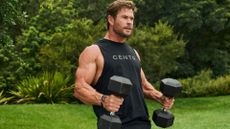 Chris Hemsworth’s personal trainer shares a simple dumbbell workout to build massive arm muscles
Chris Hemsworth’s personal trainer shares a simple dumbbell workout to build massive arm musclesThis six-move workout from Celebrity trainer, Luke Zocchi, will add serious muscle to your biceps and triceps
By Bryony Firth-Bernard Published
-
 Say goodbye to baggage fees – Roka's new collection is the travel hack of the summer
Say goodbye to baggage fees – Roka's new collection is the travel hack of the summerIntroducing the Gatwick collection...
By Lizzie Wilmot Published
-
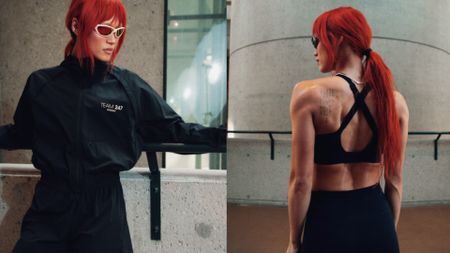 Finally! Represent 247 launches its first womenswear collection, taking you from street to gym in style
Finally! Represent 247 launches its first womenswear collection, taking you from street to gym in styleIt's about time guys
By Bryony Firth-Bernard Published
-
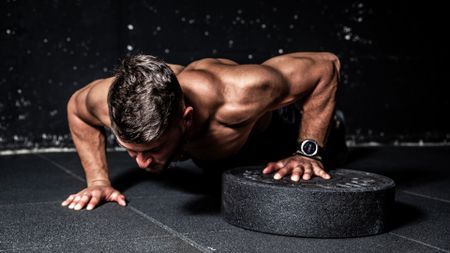 3 chest exercises you’re probably not doing to supersize your pecs
3 chest exercises you’re probably not doing to supersize your pecsA killer pec pump awaits
By Bryony Firth-Bernard Published
-
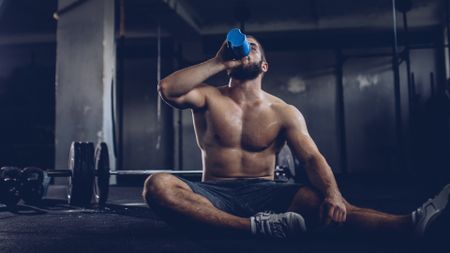 When’s the best time to take creatine?
When’s the best time to take creatine?The science-backed supplement is a must for building strength and muscle, but is there an optimal time to take it?
By Bryony Firth-Bernard Published
-
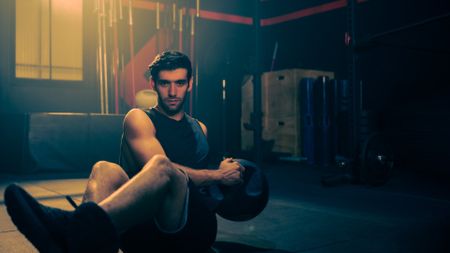 Three overrated core exercises and what you should do instead
Three overrated core exercises and what you should do insteadA fitness expert says these exercises aren’t all they’re cracked up to be
By Bryony Firth-Bernard Published
-
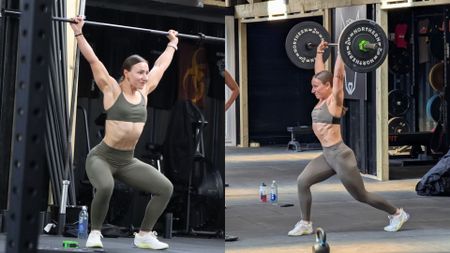 I tried Olympic weightlifting for the first time – here are three things it's taught me
I tried Olympic weightlifting for the first time – here are three things it's taught meBeing strong simply won't cut it
By Bryony Firth-Bernard Published
-
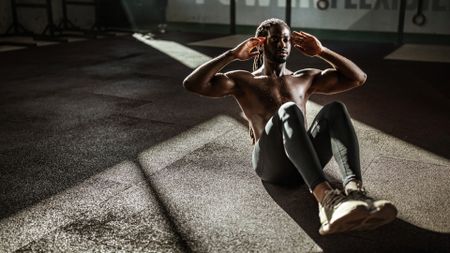 An exercise scientist ranks every ab exercise – and the worst one may surprise you
An exercise scientist ranks every ab exercise – and the worst one may surprise youFYI it’s not crunches or sit-ups
By Bryony Firth-Bernard Published
-
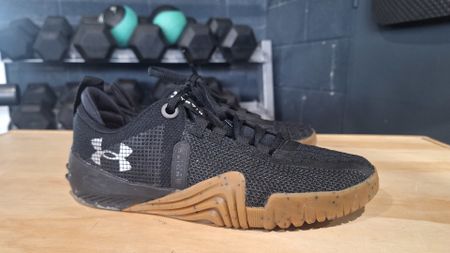 I didn't think Under Armour could improve its top-tier workout shoes – I was wrong
I didn't think Under Armour could improve its top-tier workout shoes – I was wrongThe TriBase Reign 6 has had a complete overhaul, with a flatter sole, improved flexibility and a brand-new look
By Bryony Firth-Bernard Published
-
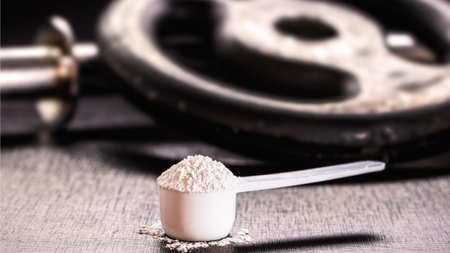 Creatine powder vs pills: which is better for muscle gains?
Creatine powder vs pills: which is better for muscle gains?A sports nutritionist gives the low-down on this popular supplement
By Bryony Firth-Bernard Published


